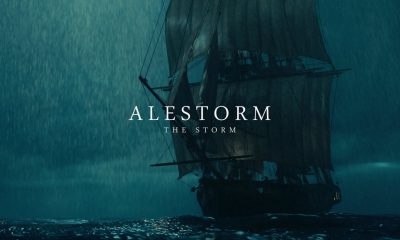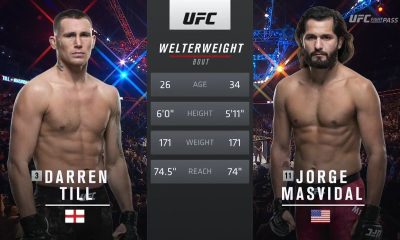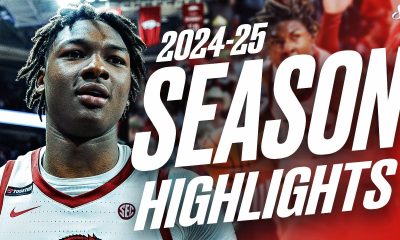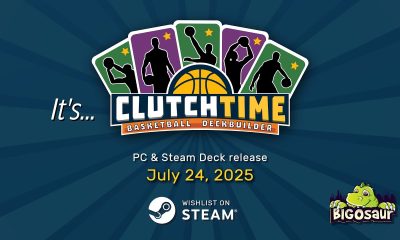NIL
NCAA Athlete NIL Pay Must Be Title IX Compliant, Dept. of Education Says
“It makes clear our approach in the Title IX lawsuit is correct and strengthens our case,” Bryant told Sportico. “It also signals that the proposed settlement in House v. NCAA should not be approved.” In a nine-page “fact sheet” released Thursday, OCR clarified that, under Title IX, NIL money paid to college athletes should be […]
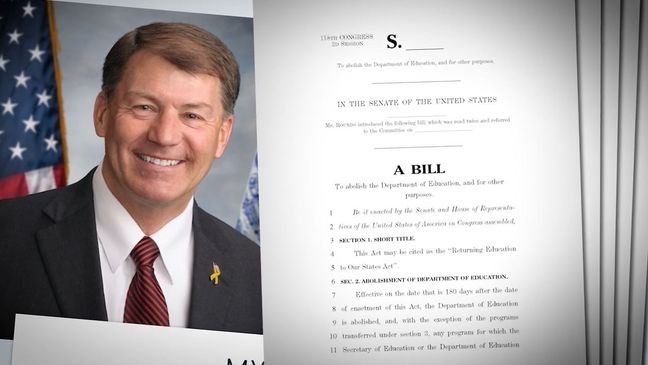

“It makes clear our approach in the Title IX lawsuit is correct and strengthens our case,” Bryant told Sportico. “It also signals that the proposed settlement in House v. NCAA should not be approved.”
In a nine-page “fact sheet” released Thursday, OCR clarified that, under Title IX, NIL money paid to college athletes should be held to the same gender-equity standards as athletic scholarships. Specifically, it stated that the amounts paid to athletes through NIL deals should be considered part of a school’s athletic financial assistance, just as grants-in-aid and cost-of-attendance funds are.
OCR further stressed that even when NIL payments are made by third parties, such as booster clubs or collectives, schools remain responsible for ensuring that these funds do not create sex-based disparities.
“OCR has long recognized that a school has Title IX obligations when funding from private sources, including private donations and funds raised by booster clubs, creates disparities based on sex in a school’s athletic program or a program component,” OCR wrote. “The fact that funds are provided by a private source does not relieve a school of its responsibility to treat all of its student-athletes in a nondiscriminatory manner.”
Despite the NCAA currently forbidding schools from directly entering into NIL agreement, a number of state laws explicitly provide for those relationships. OCR now says that in such instances, NIL agreements would be considered a form of “athletic financial assistance,” and would be used for calculating whether schools are providing equal athletic opportunities for men and women.
An Oregon spokesperson and lawyers for the House plaintiffs did not immediately respond to a request for comment.
The Department of Education’s Office for Civil Rights (OCR) has issued guidance regarding college athlete name, image and likeness, putting the onus on schools to ensure their male and female athletes receive proportionate NIL opportunities and resources—regardless of whether the funding comes from external sources.
The OCR fact sheet constitutes one of the final acts of the Department of Education’s OCR under President Joe Biden. As such, this guidance could soon be amended or reversed under President-elect Donald Trump.
OCR’s release comes two weeks before settlement objections are due in House v. NCAA, a monumental case the parties have reached an agreement to resolve by allocating billions in future revenue sharing for college athletes, with an overwhelming portion favoring male athletes in football and men’s basketball.
Although OCR had previously issued a general statement to ESPN last July, asserting that federal gender equity laws would apply to NIL payments, this is the first formal guidance on the matter.
The timing of the guidance comes amid an ongoing lawsuit filed by former female athletes at the University of Oregon, who allege Title IX violations related to unequal NIL opportunities provided by the school and its affiliated collective, Division Street. Although OCR stipulated that its guidance is not legally binding and does not apply to any specific matter, lead attorney Arthur Bryant, representing the plaintiffs against OU, praised the fact sheet as a critical affirmation of their claims.
NIL
James Franklin reveals potential change in who will run college football
As college athletics adjusts to the new status quo in the aftermath of the House Settlement, Penn State head coach James Franklin believes there is a new “entity” that will run college football. The Nittany Lions are coming off a record-breaking season under Franklin, who is entering his 12th season at the helm. Penn State […]

As college athletics adjusts to the new status quo in the aftermath of the House Settlement, Penn State head coach James Franklin believes there is a new “entity” that will run college football.
The Nittany Lions are coming off a record-breaking season under Franklin, who is entering his 12th season at the helm.
Penn State had never won as many as 13 games in a single-season, something that was accomplished in 2024, along with the school’s first College Football Playoff appearance.
Competitiveness within the NIL space has been a key part in Penn State’s rise to national contention.
Behind Big Ten rivals Ohio State and Michigan, the Nittany Lions are projected to spend $13.7 million in NIL funds to field its roster in 2025, the third-most in the conference and 11th nationally, per NCAA estimates.
The House Settlement brings a new process to NIL workings beginning July 1, as the new revenue sharing model will allow participating schools to allocate up to $20.5 million to athletes this year.
Additionally, the College Sports Commission’s NIL Go clearinghouse – ran by Deloitte – will be responsible for processing all NIL deals worth over $600.
Franklin believes that the new entity will extend to more than the NIL space and ultimately run college football.
“The way I kind of understand it is this is revenue sharing rules and NIL rules kind of are all under this umbrella,” Franklin said Wednesday on “The Triple Option.” “But I would also say that I really think it’s pretty much going to be everything. I think football is going to be run by this entity. I don’t want to use the term that we’re breaking away. But I think football is going to be run by this entity.”
“I think at the end of the day, everything is going to fall under this umbrella,” Franklin continued. “Because the reality is, right now, it’s going to be the Big Ten commissioner, the SEC commissioner, and this entity. People are going to get upset when I say that, but they’re going to be the ones running it and, obviously, other commissioners from other conferences are going to have a voice as well.”
Only time will tell if the new NIL parameters will be effective as planned. There are potential hurdles, such as state laws – like a bill recently introduced in Michigan – being passed to limit the commission’s authority.
NIL
Buss family to sell Lakers at $10 billion valuation to Dodgers owner Mark Walter
By Joe Vardon, Mike Vorkunov, Fabian Ardaya and Andy McCullough The Buss family has agreed in principle to sell the Los Angeles Lakers, one of the most iconic sporting brands in the world, to financier Mark Walter in a deal that values the team at a global record $10 billion, league sources told The Athletic. […]



By Joe Vardon, Mike Vorkunov, Fabian Ardaya and Andy McCullough
The Buss family has agreed in principle to sell the Los Angeles Lakers, one of the most iconic sporting brands in the world, to financier Mark Walter in a deal that values the team at a global record $10 billion, league sources told The Athletic.
Advertisement
“Mark Walter is entering into an agreement to acquire additional interests in the NBA’s Los Angeles Lakers, of which he has been a stakeholder since 2021,” a spokesperson for Walter said in a statement to The Athletic.
The sale, which is not yet finalized, could eventually value the team at $12 billion, according to one source with knowledge of the negotiations, who spoke on the condition of anonymity because they were not authorized to discuss the transaction. That would be far more than the $6.1 billion valuation for the Boston Celtics when they were sold in March.
Even at the lower number, the sale would be the largest for any sports team, and it will affect not only how competitive the Lakers can be in the NBA, but also impact the other storied Los Angeles sports team for whom Walter is the controlling owner, the Dodgers.
Jeanie Buss, 63, will remain governor after the sale is complete, a league source said. Her father, Jerry Buss, purchased the Lakers in 1979, and the following year the Lakers were NBA champions, the first of 10 titles they would win under his ownership. With stars like Kareem Abdul-Jabbar and Magic Johnson, the “Showtime” Lakers of the 1980s helped reinvigorate the league’s popularity and made the franchise one of the most popular in sports.
Jeanie Buss has been team governor and controlling owner since 2017, four years after her father died and a legal dispute among his children was settled, allowing her to take control.
The pending sale was first reported by ESPN.
Walter, 65, is chief executive of Guggenheim Partners, a global financial services firm with more than $325 billion in assets. He led the group that bought the Dodgers in 2012 for $2 billion. The franchise has won two World Series titles since and operated as one of the best organizations in professional sports.
Advertisement
Walter first took a stake in the Lakers in 2021 when he and Todd Boehly bought a 27 percent share of the franchise, then valued at about $5 billion, including a right of first negotiation, according to one source with knowledge of the deal.
Buss bought the Lakers for about $68 million from Jack Kent Cooke, the former owner, in a complex deal that also gave him the Los Angeles Kings and the Forum. The price of the Lakers has gone up drastically since then.
The Lakers have won 17 NBA championships — second only to the Boston Celtics — and have at multiple points employed the “face” of the league, or a player so important professionally and culturally that he transcends any box score. From Wilt Chamberlain to Abdul-Jabbar to Johnson to Shaquille O’Neal to Kobe Bryant to LeBron James, the Lakers added to that impressive list by trading for perennial MVP candidate Luka Dončić last February.
One of those legends, Johnson, who is part of the group with Walter that purchased the Dodgers, expressed his excitement about the Lakers sale.
“Laker fans should be (ecstatic),” Johnson posted to X. “A few things I can tell you about Mark — he is driven by winning, excellence, and doing everything the right way. AND he will put in the resources needed to win! I can understand why Jeanie sold the team to Mark Walter because they are just alike.”
James, who is 40 and has played 22 seasons, is said to be comfortable with the sale, though he is nearing the end of his career.
Dončić, meanwhile, is 26 and eligible for a $229 million contract extension. While paying multiple players a maximum salary has never been an issue for the Lakers, spending outside of the roster occasionally has been problematic for a team with such a strong brand.
The Buss family fortune was largely tied to the Lakers, whereas most owners in the NBA today made their money outside of the sport. The Lakers have, in the past, been more frugal when it comes to paying coaches, front-office executives, buying draft picks in the second round and other ancillary but important functions for running a world-class organization.
Advertisement
“I’m really excited — now the Lakers will be able to spend like they should spend,” said one league source with ties to the franchise.
Walter’s group, Guggenheim Baseball Management, bought the Dodgers for $2.15 billion in 2012 from owner Frank McCourt, who had driven the club into bankruptcy. Walter outbid a $2 billion offer from Steve Cohen, the future owner of the New York Mets, to secure the club. The group was fronted by Johnson, with former Atlanta Braves and Washington Nationals executive Stan Kasten designated as the team president. The Guggenheim investors included film producer Peter Guber and Boehly.
Walter sunk millions into rebuilding the team’s roster, improving its internal infrastructure and renovating Dodger Stadium. The club has not missed the postseason under his guidance, with championships in 2020 and 2024. Along the way, Walter added more sports assets to his portfolio. In 2014, he purchased a stake in the WNBA’s Los Angeles Sparks. He owns the Professional Women’s Hockey League and has begun investing in motorsports.
“Speaking from (the perspective of) a Dodger employee, he’s very competitive,” Dodgers manager Dave Roberts said. “He’s going to do everything he can to produce a championship-caliber team every single year and make sure the city feels proud of the Lakers and the legacy that they’ve already built with the Buss family.”
In 2021, Walter and Boehly added a stake in the Lakers. A year later, Walter joined a Boehly-led group, BlueCo, that overtook Chelsea F.C. The group also owns the French soccer club Strasbourg.
The Dodgers under Guggenheim’s management have seemingly taken their revenues to a different stratosphere with the acquisition of Japanese superstar Shohei Ohtani to a 10-year, $700 million deal in December 2023, dramatically shifting their business opportunities abroad as they have opened their last two seasons in South Korea and Japan. They committed approximately $1.4 billion in new salaries in the same offseason when they signed Ohtani, and backed that up with a substantial investment this past winter. Their payroll has remained among the game’s highest, with an expected investment of nearly half a billion dollars in the 2025 Dodgers alone between payroll and expected luxury tax payments.
“Our business is very healthy,” Dodgers president of baseball operations Andrew Friedman said this past November.
Advertisement
Ohtani signaled his desire to join the Dodgers was in part because of the ownership group’s investment and stability, attaching himself at the hip to Walter and Friedman through a “key man clause,” meaning that Ohtani could opt out of his deal if either left the organization. With Walter’s purchase of the Lakers, it appears he’s not leaving any time soon.
(Photo: Jevone Moore / Getty Images)
NIL
Ohio State football roundtable
10TV’s Dom Tiberi and Adam King are joined by DeVier Posey and Tim May to break down NIL changes and what it means for Ohio State football. Author: 10tv.com Published: 2:19 PM EDT June 19, 2025 Updated: 2:19 PM EDT June 19, 2025 0

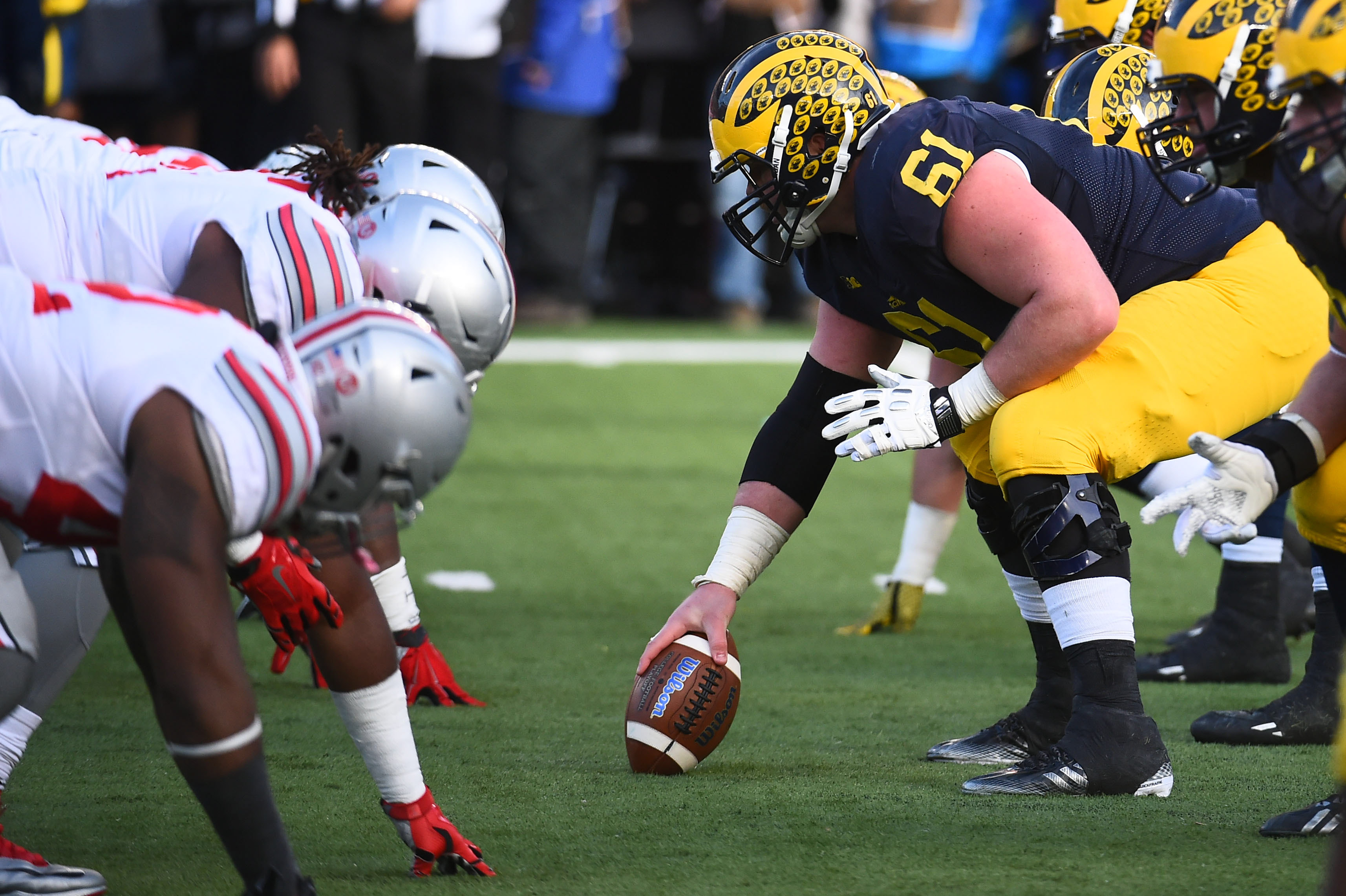
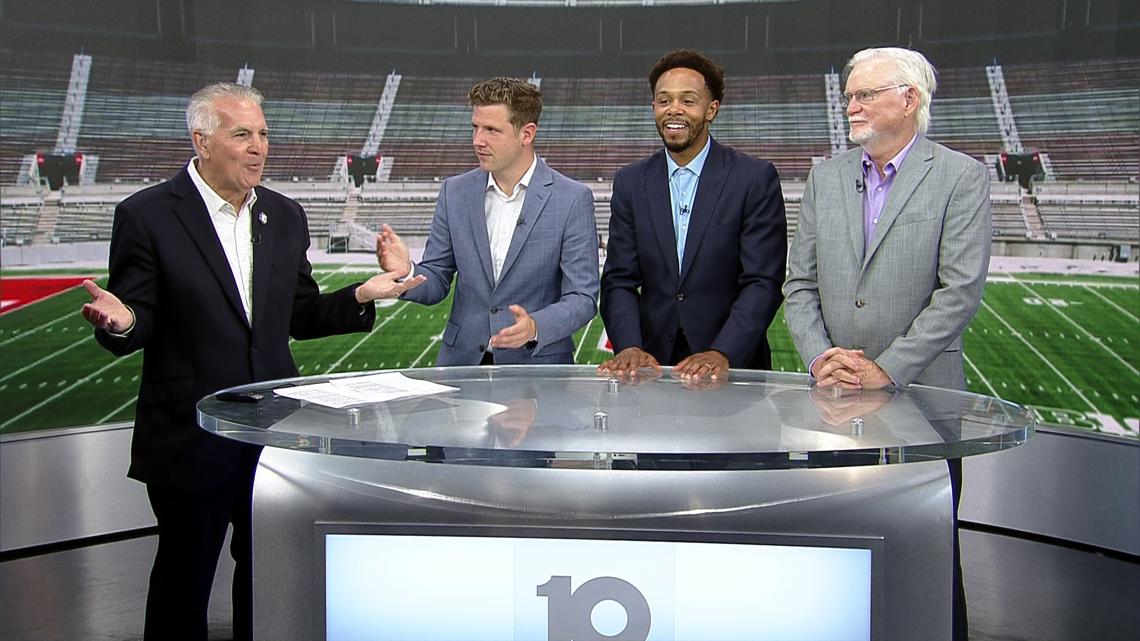
10TV’s Dom Tiberi and Adam King are joined by DeVier Posey and Tim May to break down NIL changes and what it means for Ohio State football.
NIL
Washington AD Pat Chun identifies the most important to-do item in the new world of NIL and revenue share
Washington Athletic Director Pat Chun met with the media Wednesday to cap off the Huskies’ first year in the Big Ten Conference, as well as discuss how UW is dealing with new financial realities in the wake of the House settlement and the Huskies creating Dawgs Unleashed, their new NIL in-house entity built specifically to […]

Washington Athletic Director Pat Chun met with the media Wednesday to cap off the Huskies’ first year in the Big Ten Conference, as well as discuss how UW is dealing with new financial realities in the wake of the House settlement and the Huskies creating Dawgs Unleashed, their new NIL in-house entity built specifically to find opportunities for UW student-athletes. He was also asked about his time on the House settlement enforcement committee and how confident he is that schools will bind themselves 100 percent to the rules, governance, and enforecement they signed on to when agreeing to the terms of the House settlement.
He also spoke quite a bit on the first thing he feels has to be addressed now that the school can start officially paying their student-athletes as of July 1st, the first day of the fiscal period determined by the judge in charge of signing off on the House settlement, Claudia Wilken. It’s the piece that will determine everything else moving forward, especially for the main revenue driver, football. It will determine when signing periods take place, and also when transfer portal windows will happen.
As you can see, there was a ton to unpack from Chun during his 30-plus minute Q&A with the Seattle media, and we have the full quotes from Chun below, as well as video of the full press conference.
NIL
NIL Rules Apply to High School Athletes! Well, Almost
College athletics in the United States underwent a substantial change in July of 2021 after individual states began enacting laws to permit student-athletes to legally monetize their name, image, and likeness (NIL) without the fear of losing either their athletic scholarship or eligibility. These state laws, for the most part, now allow college athletes to […]


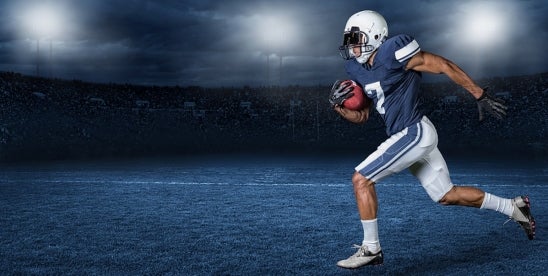
College athletics in the United States underwent a substantial change in July of 2021 after individual states began enacting laws to permit student-athletes to legally monetize their name, image, and likeness (NIL) without the fear of losing either their athletic scholarship or eligibility. These state laws, for the most part, now allow college athletes to receive compensation from brands, marketing firms, broadcasting, and social media companies, or any other entity that wishes to retain their services. As college athletes began to capitalize on their individual NIL, the question became – what about high school athletics? Could a student-athlete competing at the high school level earn compensation from their NIL comparably to a college athlete? The answer – depends on the state in which that athlete is competing.
Currently, forty states, in addition to the District of Columbia, permit high school athletes to earn money from selling or licensing their NIL rights without forgoing eligibility or the right to participate. Of the ten remaining states, five have legislation currently pending that could eventually permit such activities.1 Interestingly, one state that previously banned NIL practices was North Carolina – that was until a lawsuit was filed against the state’s Board of Education compelling them to do otherwise.
That lawsuit, brought by Rolanda Brandon, on behalf of her minor son Faizon Brandon (a highly rated 5-star quarterback), was filed on August 23, 2024, in North Carolina’s General Court of Justice, Superior Court Division against the North Carolina State Board of Education and North Carolina Department of Public Instruction. Per the complaint, the Brandons asserted that although the state of North Carolina’s legislature did direct the North Carolina State Board of Education to regulate how high school athletes could monetize their NIL, that the Board, in lieu of regulating, prohibited it outright.2 Because the Board of Education exceeded their delegated statutory authority, the Brandons claimed, its NIL prohibition was arbitrary and capricious and therefore invalid pursuant to N.C. State Stat. Section 1-253 and the North Carolina Rule of Civil Procedure 57. The Brandons sought a preliminary injunction against the Board’s NIL ban due to the fact that Faizon and his family would be irreparably harmed financially because it precluded them from entering into a formal licensing and endorsement agreement with NIL Sponsor 1, while also foreclosing any additional opportunities with other businesses in the future.3
By way of background, in September of 2023, the North Carolina state legislature adopted a bill directing the Board of Education to “adopt rules governing high school interscholastic athletic activities conducted by public school units” including “student amateur status requirements, and rules related to use of a student’s name, image, and likeness.”4 On July 1, 2024, the North Carolina State Board of Education, in lieu of adopting a set of regulatory rules, instead outright banned every public high school athlete from using his or her name, image, or likeness for commercial purposes.5 That outright prohibition, however, apparently was an overreach by the Board of Education because on October 1, 2024, Superior Court Judge Graham Shirley granted the Brandons’ motion for preliminary injunction and enjoined the Board from prohibiting any athlete attending a public school in the state of North Carolina from exercising his or her right to monetize their NIL.
Although the state of North Carolina’s ruling is not legal precedent for the other remaining states currently foreclosing high school athletes from monetizing their NIL, those states should take notice and understand that their prohibition may be vulnerable to a legal challenge. That being said, with no national standards regarding NIL, most of the forty states that do allow for monetization rest upon their high school athletics governing bodies to formulate any and all rules and regulations. This leads to a variation of standards between states, but there are a few key restrictions present in most of these rules that high school athletes should be aware of:
- High school athletes typically may not refer to or include their school’s uniforms, logos, colors, or facilities of the state’s high school athletic association in their NIL activities.
- High school athletes are typically prohibited from partnering with gambling, alcohol, tobacco, weapons, firearms, ammunition, and other adult categories of brands.
In those states where NIL opportunities are allowed, high school athletes have a chance for a significant financial windfall. However, athletes, their parents, and those advising them must ensure that any NIL agreement is in accordance with the applicable rules of their state, since noncompliance could lead to loss of eligibility to participate in athletic competition, which will certainly jeopardize any future athletic and financial opportunities.
1 Michigan, Delaware, Wyoming, Texas, and Alabama.
2 Brandon v North Carolina Board of Education, et al, 24CV026975-910
3 24CV026975-910 Complaint at page 20.
4 2023 N.C. Sess. L. 133 Section 17. (a) (N.C. Gen Stat. Section 115C-407.55(1)(h))
5 ATHL-008 (NIL Prohibition).
NIL
Podcast: El Paso’s biggest high school football star navigates NIL
Star El Paso football player navigates NIL, shifti | RSS.comStar El Paso football player navigates NIL, shifti | RSS.com Diego Mendoza-Moyers: In a new era of college athletics, where athletes at powerhouse programs are staring at bigger paydays – and higher expectations – than ever before, El Paso has its own star. Jake Fette is […]

Diego Mendoza-Moyers: In a new era of college athletics, where athletes at powerhouse programs are staring at bigger paydays – and higher expectations – than ever before, El Paso has its own star.
Jake Fette is a senior quarterback at Del Valle High School who has committed to play at Arizona State University in Phoenix (Tempe). He’s considered among the absolute best quarterbacks in the country at his age.
The city’s biggest high school football star illustrates how the path for big-time athletes has changed in the college NIL era – with athletes now compensated for their name, image and likeness. Gone are the days of broke college athletes, when receiving a university scholarship was considered adequate compensation for an athlete.
And while a more regulated system may be on the horizon, the NIL era has created what some have called a wild, wild west in recent years, with collegiate athletes hiring agents and jumping from school to school to chase a pay day while they can.
But, Fette is a little different. Even as his profile on the national recruiting stage has grown over the last year, he’s remained committed to Arizona State, and has tried to strike a balance between landing in a good situation, and also securing compensation commensurate with his skills. And Fette isn’t the only high-level Division 1 prospect in El Paso walking this path.
El Paso Matters assistant editor and reporter Pablo Villa published a story this week about Fette’s recruitment journey amid a new, moneyed landscape in college sports.
And in a moment, we’ll welcome Pablo to the El Paso Matters Podcast to talk about his coverage of Fette’s journey, and the broader shift that El Paso high school athletes are having to navigate.
But, before we start: This El Paso Matters Podcast episode is sponsored by Tawney, Acosta and Chaparro: Truck Crash and Injury Attorneys. Their team of local, seasoned trial attorneys are ready to help if you’ve been injured in a crash.
Pablo, thanks for joining me.
Pablo: Always a pleasure, Diego. Thank you for having me.
Diego: So, Pablo, how good is Jake Fette? Are we witnessing the best high school football player in El Paso’s history?
Pablo: Man, you come out swinging with that question. This is the kind of question that can start fights at Thanksgiving dinner, right? I’ll address the second part of your question first.
I mean, is he the best high school football player in El Paso’s history? I mean, you can make the argument that guys like Andre Jones, who played at Andress, who was, I think, one of three Parade All-Americans that El Paso has ever had, maybe he was the best ever. I mean, there’s certainly been a lot of talented guys. And even guys who are 5-foot nothing, 100-and-nothing (pounds) who have put forth these Lilliputian efforts, right, and had spectacular seasons who arguably are great players, too. So, it’s just going to depend on who you are and where you’re from and what kind of mood you’re in that particular day, right?
But in terms of Jake Fette, I mean, he’s a spectacular talent, right? He’s not just physically gifted, he’s mentally sharp, he’s grounded. As we speak, he’s competing in the Elite 11 finals in Los Angeles. He’s the first player from El Paso to ever participate in that. Another Del Valle alum, Steven Montez, made it to the regional round of the Elite 11, but he never advanced to the finals.
So, this is something that Jake Fette is sort of pioneering for El Paso athletes, right? He’s currently ranked as the number four quarterback in the nation, which alone puts him in historic territory, right? I mentioned Steven Montez, and I spoke with him as part of this story, and he played at Colorado and he played in the NFL, right, with the Washington Football Team they were called at the time. Montez said that Jake’s accuracy at age 16-17 surpasses what he himself had at 18, right, as a senior at Del Valle.
So, you combine that with what everybody says about Jake Fette’s leadership, his work ethic and the respect he commands in the locker room, and you start to understand why coaches and scouts are calling him one of the best to ever come out of the borderland.
Diego: How big of a deal is it that he committed to Arizona State?
Pablo: So, I think it’s always spectacular when a player from El Paso gets the opportunity to play at a Division 1 school, and in this case, it’s one of the Power Four schools, right? I think it’s just really awesome that El Paso players are getting to represent our region on those big stages, right? And he’s not the first. I mean, there’s been plenty that have come before him that have done this. I think he just comes with a lot of ballyhoo and a lot of high expectations. And those are things that I know that he’s aware of. I know his coaching coaches are aware of, and I know he’s going to work really hard to represent Arizona State really well.
The other thing to consider here is that he still has a whole senior year to go through. I mean, I know he’s really focused on that and just, right now, the only thing he’s really focused on is making sure that Del Valle football gets to repeat as district champion.
Diego: Yeah. And, so, we know Fette’s ascendance, right – as you said, he’s still entering his senior year, but he committed to Arizona State at the beginning of his junior year – but his ascendance onto the national stage seems really to have started with a chance encounter with Texas Tech scouts, right?
Pablo: Yeah, that’s right. So, in the spring of his sophomore year, it was actually January of last year, of 2024. Texas Tech coaches, they came to visit El Paso as coaches from all kinds of schools often do. They’re just kind of, just visiting schools, talking to coaches, trying to gauge the level of talent that exists so that they might be able to go back to wherever they’re from, to report back on some of the targets they might start to try to hone in on for their programs in the future years.
And, so, coach Rudy Contreras, head coach out at Del Valle, had a conversation with these coaches, one of them in particular. And he was telling him, ‘Hey, I’ve got this guy you might want to come look at.’ And the guy he was talking about was Jake Fette, right. And the coaches were heading out. They were going to catch a flight out of the El Paso airport. And, so, it kind of ended there, right? The conversation ended there.
Give it a little time, a half-hour later, the coaches call back and say “‘Hey our flight got cancelled or delayed. Is it cool if we come visit the Del Valle campus to check your guy out?’” And coach, of course, says “Yeah, come on down,” and rolled out the red carpet for them, and had them go out and watch Jake throw a few passes out during a workout right there at the stadium.
They were impressed, and I think the really unique thing about this story, which it is in the story that was published on our website, is that one of the coaches just took out his phone and started recording Jake = Fette as he went through the route tree progressions and all the things he does as part of a workout. And he started facetiming with the more senior coaches back in Lubbock. And they’re just – it’s amazing, right? They’re just watching this through a phone. You’ve got to question the quality of that phone. It must have been an impressive phone to be able to record these clear images.
But, it was really just based on that one workout, and over a phone, that the coaching staff at Texas Tech decided to offer him on the spot, right? So it’s just kind of cool to think of this, like you mentioned, it was a chance encounter. If that flight left El Paso on time, or didn’t didn’t experience any problems, we might not even be having this conversation, right? So it is just cool how sometimes luck is just sort of when opportunity meets preparation, right? And, so, that’s kind of what happened here and that’s kind of what touched off all this national recruiting whirlwind.
Diego: Yeah. So he got an offer in his sophomore year of high school. So, that’s pretty impressive.
One thing I thought that was really interesting in your story was you, you use the word “brand” and “branding” a few times to refer to the image players have to cultivate even as, you know, freshman or sophomores in high school. Can you expand on what you mean by branding and talk about how players want potential college recruiters to perceive them in this NIL era?
Pablo: So, I think branding, in this context, it’s not just talking about social media following and those kinds of things. I mean, it’s about how a student athlete presents themselves publicly, and privately to an extent, and how consistent they are on the field, and whether they carry the kind of professionalism that college programs want to invest in.
I think in the NIL era, schools, they’re effectively making business decisions, right, when they recruit. They’re asking, ‘Is this a player who can represent our program? Is he coachable? Is he marketable? Is he mature? And Fette’s coaches and his dad, who is an assistant coach at Del Valle, and who I also talked to as part of this story. They’ve talked about how, Jake, he’s been mindful of that, that from really early on and he’s not someone who chases attention, but rather he kind of just stays focused on the task at hand, right, and keeps the focus on his team and as well as the things he’s supposed to do as as a high school student.
That’s part of what makes his brand so appealing. Right. I do think, though, that branding has sort of been part of what a player has to do. Even before NIL existed – I mentioned I talked to Steven Montez, the former Del Valle quarterback who played at Colorado – and he talked to me about “I had to start a Twitter account, and I had to. I had to put things out on Twitter and share links to my highlights,” and that kind of thing. And predating that, all the players who have come out of El Paso who played for big-time programs, they’ve had to do things of that nature to sort of get exposure for themselves. But they did it in different ways, right?
And I know one of the things you might want to talk about as we progress through this podcast is talking about Ed Stansbury, a former Irvin High School great, who ended up playing at UCLA and played in the NFL for a bit. He did it a little differently, too, right? But he had to maintain a brand as well, but he didn’t have the things that we have today, right?
He didn’t have the modern day tools like Twitter, Hudl reels, that kind of thing. His coach helped him do it a little differently. And I know, I know, we’ll talk about that a little later, but I think that’s what branding is here. It’s just a way of showcasing not just your athletic talent, but the kind of person you are, and to make yourself more marketable to universities.
Diego: You have to have – or at least exhibit – a high level of maturity these days to maybe get a big offer?
Pablo: It helps, and I mean, I think that’s probably been true forever. I mean, I mean if you think of old school coaches, like a coach Paul Bryant of Alabama or those guys, they always expected you to conduct yourself like a gentleman, right? With your “yes, sirs” and “no sirs” and all those kinds of things that I think just someone who is well-mannered and eloquent and all those things has always been someone who people want to deal with a lot more than people who aren’t those things, who don’t have those attributes, right?
So, I think, in a sense, marketability of an athlete has always been a thing. It’s evolved over the years and certainly some of the athletes. They have the day, the things they have to do to maintain that brand. I mean, it can be kind of daunting, right? So, in a sense, I don’t know that it’s gotten easier. I think in some ways it’s probably gotten harder but, but Jake Fette is someone who is exhibiting all those positive attributes and doing it in a real good way, in a real mature way. And that’s why I think he’s in this position.
Diego: Yeah. And you mentioned you spoke to Jake’s father, Rick, who played at UTEP. And Rick Fette had a quote to you where he said “There’s two ways we could probably do it right now,” referring to his son’s recruitment process. And he said, “You can go get an agent and have that agent go to work for you and shop you around to the highest bidder … or you go where you want to go.” He also said the players these days have to quote “show proof of value”. And, so, I’m curious, what did you make of those comments? And just curious what you can tell us about the recruitment process for a star player now in 2025 versus 10 or 15 or even 25 years ago when you were playing at Montwood High School?
Pablo: Ha, you threw the Montwood High School thing in there. Yeah, I did play there and I’m very proud to be a Ram, so I’ll say that first.
But, so, I think what coach Rick Fette, I think what his comments really cut, they really cut to the heart of how recruiting has changed a little bit, right? Twenty years ago, even five years ago, Diego, honestly a kid’s value was mostly determined by film, in-person visits, that kind of thing.
Now, in this NIL era, which has only been around for less than five years – it started in 2021 – schools are investing real dollars, right? Real dollars, and they want evidence that the player, the student-athlete, is going to deliver for them. So, I think proof of value, it means performance, it means character and it’s how well a player fits into a broader program strategy, right? So, I think the biggest change is that recruiting, it’s not just a football decision anymore, it’s a financial one.
And, so, Jake and his family, they’ve taken a measured approach through this, and they’ve emphasized education and fit over chasing the highest bidder, which I think is pretty admirable. And I think there’s things – and I know we’re going to get into this a little later – there are things that sort of limit what they can do now anyway, just because of UIL rules, Texas education code rules, those kinds of things. So, they’re not exactly able to partake in these things where they would be able to chase the highest bidders anyway. I don’t think that’s something they’re interested in.
I just mention that as something that they have to contend with as well. It’s sort of something that makes the NIL picture a lot more muddled, and I know there are efforts currently underway, and things that have happened very recently that are helping to sort of clear that picture.
Diego: Yeah. So, maybe not high school athletes, but – obviously the dollars are out there, right, if you’re a high-level recruit? And, so, even college athletes themselves are hiring agents, right? And sort of going to programs and saying, hey, how much can you offer? That’s what’s been going on in recent years, right?
Pablo: Right. That’s right. And, I mean, the numbers vary widely. There are all kinds of stories and things out there that, quite frankly, a lot of it is speculation and some of those reports are grounded in true things. But it’s really tough to get your arms around, right? Because, I mean, as I mentioned, there’s things in Texas that sort of limit what the Fettes can do.
That being said, there are 49 other states in this country, and all of them approach this differently, right? And, so, it’s really hard to, like, emphatically say that someone is making X amount. Because the truth is, I don’t think we all really know. I mean, we can guess and there are some deals that have been very generous, but I don’t know that we’d be able to put a number on what any of these players are actually making.
Diego: Yeah. And I guess, just to kind of touch on that one more time, I mean, you put in your story – and, again, there’s obviously a lack of clarity around what the student athlete compensation really is, right? But there are some estimates that the current ASU quarterback, his NIL deal is valued at $3 million right? And, again, maybe there’s some uncertainty in that, but I just wonder if you can give us a sense of sort of, is that common? Are college athletes, the majority of them out there, making six and seven figures? Or is that sort of – just a select few? And I also wonder, I mean ASU really, they went beyond expectations this past year. So, that also has to affect your compensation too, right, as a player?
Pablo: That’s right. So, the majority of players aren’t making those large amounts of money, right? I think you do have some guys, like an Arch Manning at Texas or a Carson Beck at Miami, who command a little more attention just because of their skill set. I mean, they do have deals that are reportedly worth multiple millions of dollars, right? But those deals are rare. I think most players get NIL earnings in the thousands, maybe tens of thousands.
The top quarterbacks at Power 4 schools, they can be maybe in the seven-figure range, barely touching that – high six-figures, that kind of thing. But those numbers, they’re not the norm. And what’s new is that schools, not just third-party boosters, they’ll likely have a formal role in direct compensation going forward, right? So, you know I talked about Jake Fette and some of the things he has to deal with now. So, right now that he’s still in high school, right, he’s a senior-to-be at Del Valle under UIL rules and under Texas Education Code, he’s not permitted to receive compensation. He’s not permitted to sign an NIL deal. He’s not permitted to enter into any agreement related to NIL until he’s officially enrolled in college, right? So, even things like promised future payments or representation arrangements from an agent or or things like that, those are things that could render him ineligible. And his team could be subject to whatever disciplinary action, forfeits, that kind of thing.
So, maintaining that amateurism is still something that he has to do through the end of his high school career, which will be later in the fall. Once he enrolls at Arizona State, presuming that that’s where we’re headed, then the NIL deal is going to be legal and it’s going to be structured, right? Upon his enrollment at ASU, Jake will be eligible to participate in NIL deals under NCAA and the state specific-rules. Arizona has its own laws. I’m not an expert in them. But I know that, right now, Jake and his family, they’re doing their preliminary work to learn everything they need to learn about all this.
And as you mentioned or as you alluded to, they’re considering two routes, two pathways to NIL. And one is the agent route, where an agent will shop Jake around for the most lucrative deal. That’s an approach that a lot of – or that a fair amount of players are taking right now. I mean, you have your stories like your Nico Iamalaeva from Tennessee, who had a great year at Tennessee last year, took them to the (College Football Playoff), had no danger of losing his starting spot and left, right? Took off, and landed at UCLA, eventually. But he did it for the dollar, right? Or at least, reportedly, he did it for the dollar, and that’s a route that players can take in this new environment that we have.
The other route is just going the relationship route. And that’s where you just go where you want to go, because that’s where you actually want to play. You like what you hear. You like the program. You like the players that are within it and you just believe in what they’re doing, right? And, so, that’s sort of the route that Jake is taking, is seemingly taking. He’s going to honor his verbal commitment to Arizona State, which he made last September.
By all accounts, his family prefers this. They want to focus on education and trust over those top-dollar offers. So, that’s where we are right now, right? I think Jake’s NIL mindset is that he and his family, they emphasize education, they emphasize loyalty and development, right? Over chasing the highest bidder.
And, honestly, I think part of it is they want to sort of put this conversation to bed, so that Jake can just focus on his senior year of high school and enjoy it and just have the decision part behind it. Because – and he shared some of this with me – but it must be exhausting. In some ways, you think “Man, I’m a top-flight recruit. Like, I’d have a cush life when I’m in high school,” right? But, you do have to consider that these coaches are haranguing you day and night. They’re texting you while you’re trying to be in class or before you even go to school. They keep you up late at night because they’re trying to call you, trying to maintain contact with you, asking you, “What can we do to make you come to this school?” I mean, that can be exhausting, man, when you’re just trying to be a high school kid. You think back to when you were at Franklin, and just trying to enjoy and plan your weekend and those kinds of things. Those are things you can’t do when, or at least you can’t do them effectively, or you don’t have a lot of time for them when you’re just having to have all these other conversations.
So, I think it was important for Jake and his family to just make a decision, and they happen to like what ASU – the way they run their program, they happen to like the coaching staff and they think he’ll have a real shot at seeing the field there, or at least to compete for a spot, fairly, to see the field there. And I think they were happy with what they did, and I’m not sure that they’re going to – that there’s any way that they’re going to get out of this.

Diego: And I’m curious if you could touch on sort of the recruitment process for other high school stars in El Paso. I mentioned Jake Fette isn’t the only high-level Division 1 recruit or prospect in town.
We know about standouts such as Daveon Singleton at Chapin, and Ernie Powers at Franklin, who have committed to play at UTEP, and offensive lineman Justin Morales, who’s also at Franklin, is set to play at Kansas State. And then running back Ryan Estrada over at El Dorado is also a D1 prospect. And, so, I’m just curious if you can sort of just touch on maybe how their recruiting journeys might differ from a really high-level national recruit like Fette, right? They’re high-level players in their own right. But just curious what that sort of looks like maybe in comparison to this big national recruitment search for Fette, right?
Pablo: So, it’s a great year for El Paso talent, right? It’s one of the strongest in recent memory with regard to the young men that you mentioned. I think, for the most part, I’m not sure that the actual recruiting process is much different. All of these guys, they still have to engage in all that grueling physical preparation. They’ve got to lift weights, they’ve got to run, they’ve got to work out and they’ve got to do all the things they need to do in the classroom, too, right? To make sure that they can perform on the field, and they still have to do all the same things that Jake Fette does right, with regard to the coaches that are courting them for their services in college. They’ve still got to deal with the phone calls, the text messages, they’ve still got to respond to the social media messages, the DMs, whatever, all those things, right?
So, for all these guys, like, in that sense, I think the process is still competitive. It’s very similar. When you’re playing ball, I think whether you’re a lineman, quarterback, skill position, whatever. I mean, you still have to do all these things to prepare yourself. And if attention does come to you, I think it’s the same whether you’re being recruited by Arizona State or by Blinn College, right?
I think the conversations are very similar. The way you go through them is very similar. So, in that sense, I don’t know that things are much different for these other guys you mentioned. What might be slightly different is sort of the scale of the actual exposure, right? Players like Jake Fette who drew these upper-echelon talent rankings — and who is at the Elite 11, right? I mean, those things, they come with a little additional attention, they maybe bring potentially bigger NIL stakes, right? But, again, like, I don’t know that other players – the media conversations they have, the NIL conversations they have, they might be a little more modest, but they’re still the same thing. You’re still going through the same thing. I think Jake would be able to relate to any player who’s going through these things, that they’re very similar.
That being said, I think it’s exciting that the landscape is changing for all these recruits. Branding, performance, composure, those things matter a lot more now than they ever did, right? Even at schools that are outside the Power Four.
Diego: Yeah. And just last question here, Pablo. You mentioned here and in your story about past athletes in El Paso who have gone on to play Division 1 schools, like Ed Stansbury, who played at Irvin and went to go play at UCLA in the late 90s. Steven Montez, who was also a starter at Del Valle and then became a multi-year starter at Colorado about a decade ago, before a stint in the NFL. And before that, when I was younger, I remember John Skelton from Burges going to play for the Arizona Cardinals. And, of course, we all know about Aaron Jones, who played at UTEP and is still starring in the NFL. But, at the time, it kind of felt like those guys were the exception. And, so, I just wonder if you think it’s fair to say that there are more El Paso athletes going on to play at prominent Division 1 colleges in recent years? And do you think we could see that continue?
Pablo: So, this is an interesting question. I think there’s probably slightly more players that are getting to go to Power Four schools or Division 1 schools nowadays than there were in the past. But that’s not to say that El Paso was lacking in talent in years prior.
I think we talked about this a little bit before we started recording. If you think back 20, 30 years, before the advent of social media and those things, the only way you’re going to know about an El Paso kid is if you actually come down here. And back in those days, coaches from colleges, they would arrange trips and they would look for efficiencies within their recruiting trips, right?
So, if you can go to an area like Dallas, you can hit Fort Worth. You can even take a drive down to Austin, maybe even San Antonio. And you can do that all in a matter of days, right? And see a bunch of kids and all those kinds of things. Similarly, if you go to some big metro areas in Georgia or Florida or California, you can get a lot out of those trips because you can see all these kids in close proximity, relatively close proximity to each other.
So, when you think about El Paso, just geographically, we are isolated. I mean, this is a thing you hear and not just with regard to football, but with all kinds of things, right? And that isolation really limited the willingness of coaching staffs to take the trip down here, because from here, I mean, it’s 10 hours to Dallas, it’s four hours to Albuquerque, six (hours) to Phoenix. All that kind of thing just costs money, right? And it’s tough to figure that into your travel budget. And, I think, because of that, I really do think – I believe that a lot of colleges missed out on recruiting really special players from here.
It took someone really special or it took some really big efforts from coaches to make those things happen for their players. You mentioned Ed Stansbury, and one of my favorite stories that he shared with me was just the fact that he came up in the mid 90s, right? There was no Google, there was no Twitter, there was no Facebook. There was no Hudl, no Max Preps, nothing like that, right? That didn’t exist back then.
So, Ed got exposure because his coach, Tony Shaw – who was one of the best coaches in the region, very celebrated coach out of Irvin High School, who has guys who coached with him, who are still coaching today – but Tony Shaw saw something special in Ed, and he went through the pains himself to sit in that film room with VHS tapes, right? And splice them together to send out to schools, because he really felt Ed was a special talent. And that came to fruition for Ed, right? I mean, he ended up playing at UCLA, but he had offers from really big schools: Texas, he had Syracuse, programs like that – really, really top-flight programs. And he got his opportunity because his coach went to those lengths, right? It’s not because anyone came down here and spotted him.
So, yeah, I do think it’s fair to say that there are more Division 1 athletes getting recruited out of El Paso in all sports, not just football. That’s not to say that the talent didn’t exist here before. I just think there are so many more avenues to expose these kids to the rest of the world, and they’re finally starting to gain a lot of attention, you know? So, that’s been fun to watch and hopefully it continues into the future.
Diego: Yeah. And we can’t forget to mention Tristen Newton, who was on the national championship (University of Connecticut) as well. And a lot of El Paso athletes are doing great things on the national stage.
And then, of course, this fall, we’ll be really curious to see how Jake Fette’s senior season goes and just the kind of season he can put together at Del Valle. And, even as a Westside guy, I might have to get out there for a game on a Friday this fall. So, we’ll see.
But anyways, we’ll leave it there. Pablo. Always good to chat with you about El Paso athletics, and we’ll maybe have you come on to talk about Fette’s season later this year.
Pablo: Yeah. Appreciate the opportunity Diego. And, just for kicks, Del Valle does open the season at my alma mater, they’ll be traveling to Montwood. So, that’ll be an interesting game.
Diego: For sure. Alright, talk to you soon, Pablo.
-

 High School Sports2 weeks ago
High School Sports2 weeks agoParents Speak Out As Trans Pitcher Throws Shutout In MN State Quarterfinals
-

 Professional Sports2 weeks ago
Professional Sports2 weeks ago'I asked Anderson privately'… UFC legend retells secret sparring session between Jon Jones …
-

 College Sports3 weeks ago
College Sports3 weeks agoIU basketball recruiting
-

 Health2 weeks ago
Health2 weeks agoOregon track star wages legal battle against trans athlete policy after medal ceremony protest
-

 Professional Sports2 weeks ago
Professional Sports2 weeks agoUFC 316 star storms out of Media Day when asked about bitter feud with Rampage Jackson
-

 High School Sports3 weeks ago
High School Sports3 weeks agoThe Arizona Daily Star's top high school athletes, coaches and moments of the 2024
-

 NIL3 weeks ago
NIL3 weeks agoNCAA Sends Clear Message About Athlete Pay and Roster Limits
-

 Rec Sports2 weeks ago
Rec Sports2 weeks ago2x NBA All-Star Reacts to Viral LeBron James Statement
-

 Social Media2 weeks ago
Social Media2 weeks agoControversial Athletics Gender Dispute Goes Viral After Riley Gaines Lashes Over Authorities
-

 NIL2 weeks ago
NIL2 weeks agoMen's college basketball Top 25 reset




